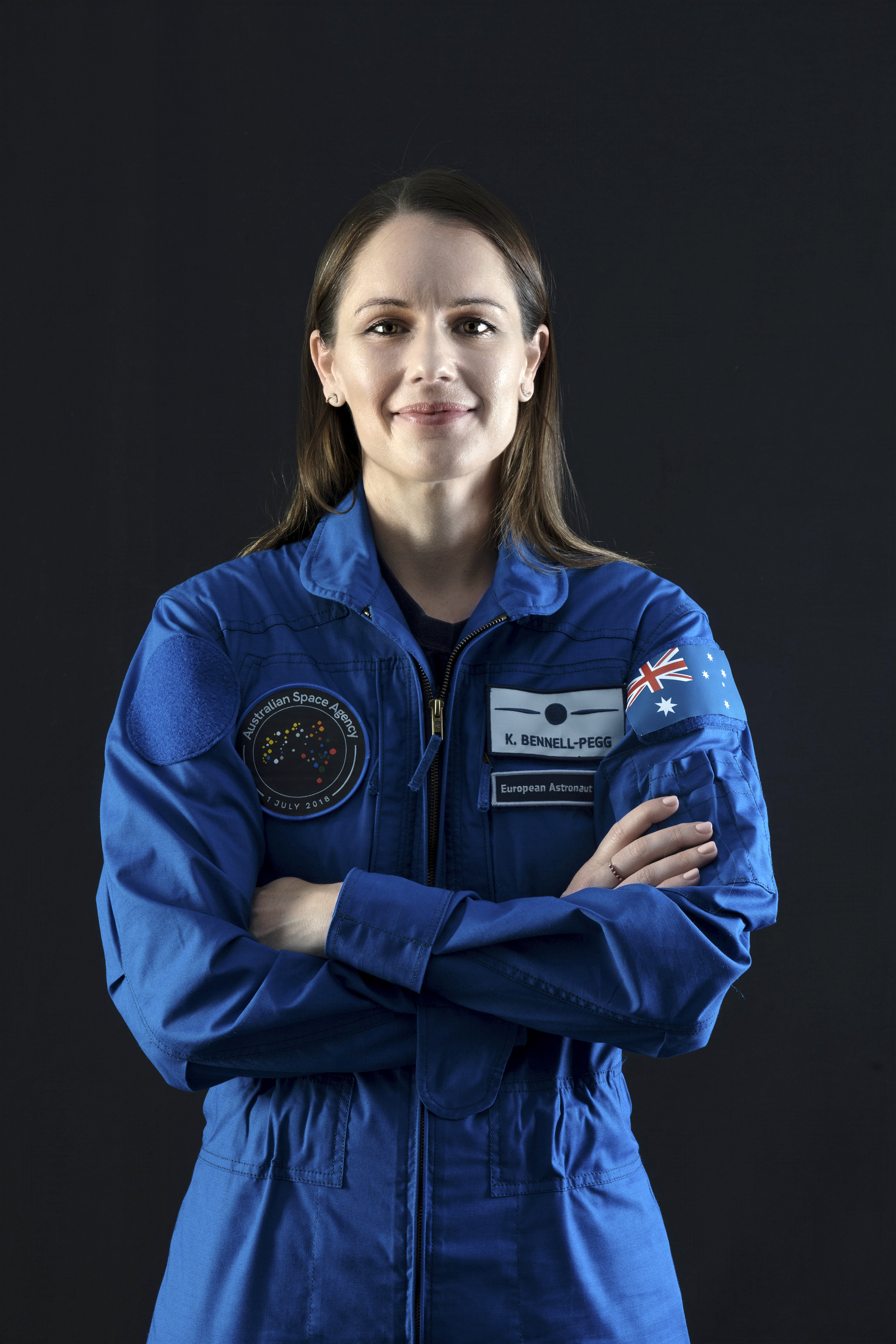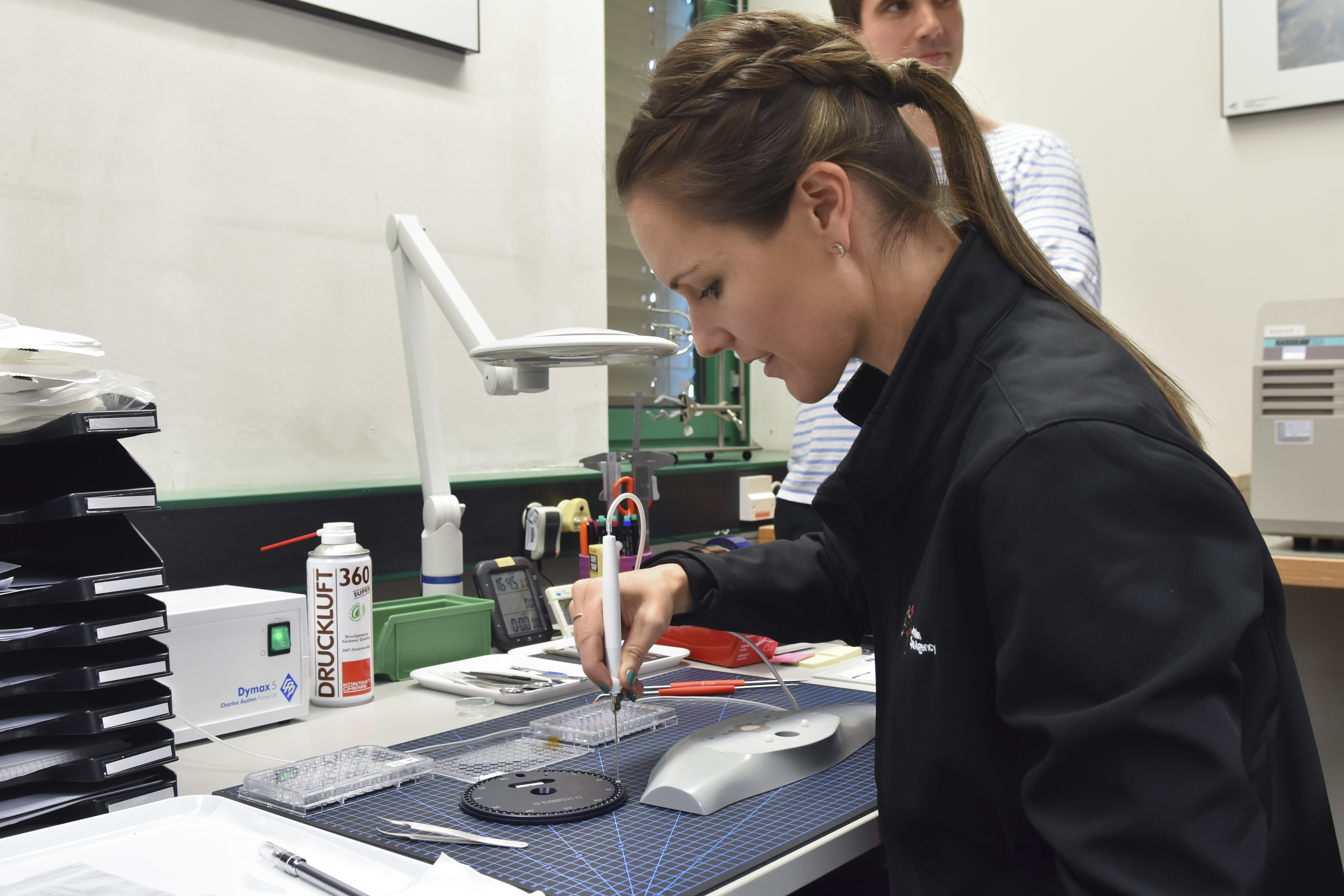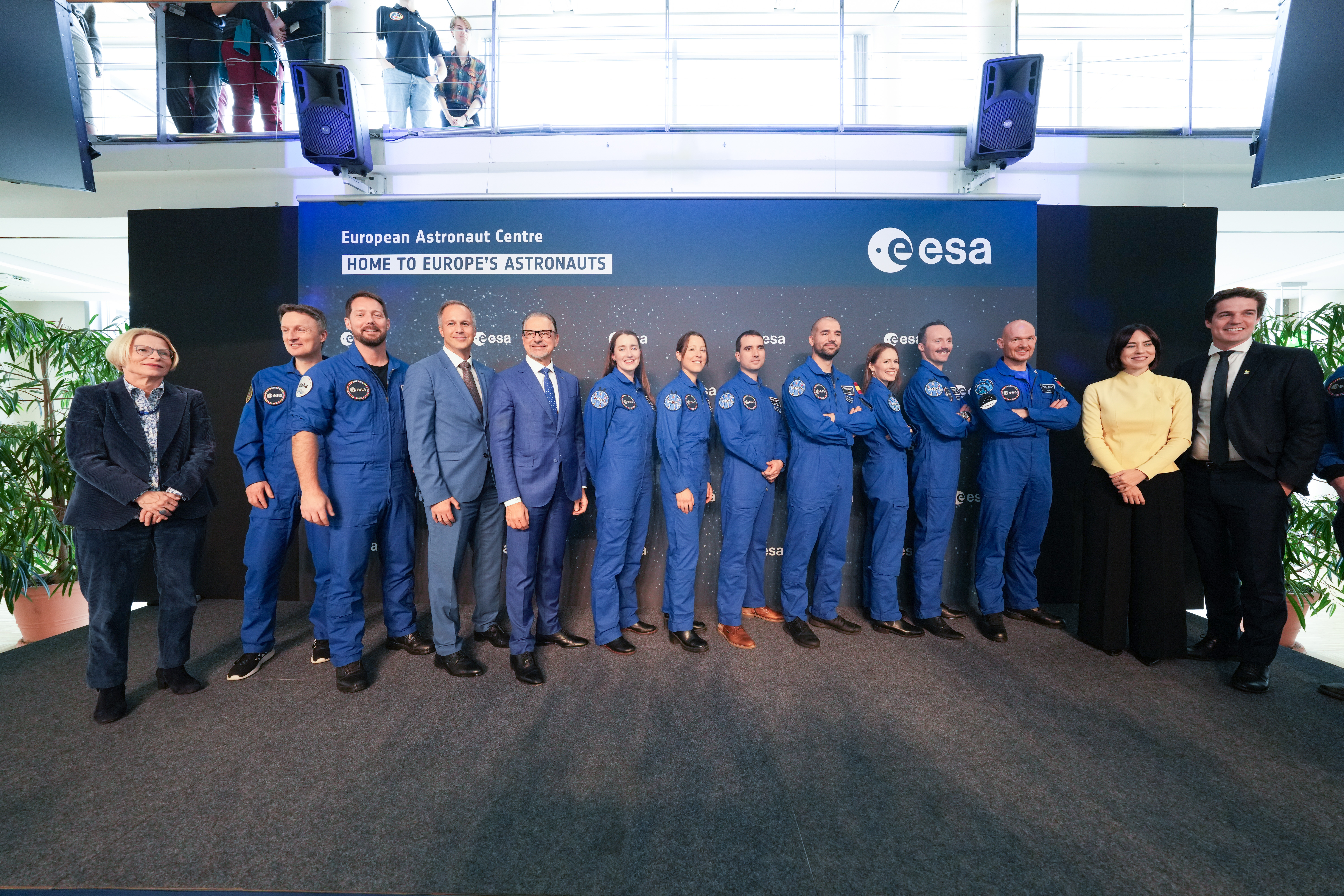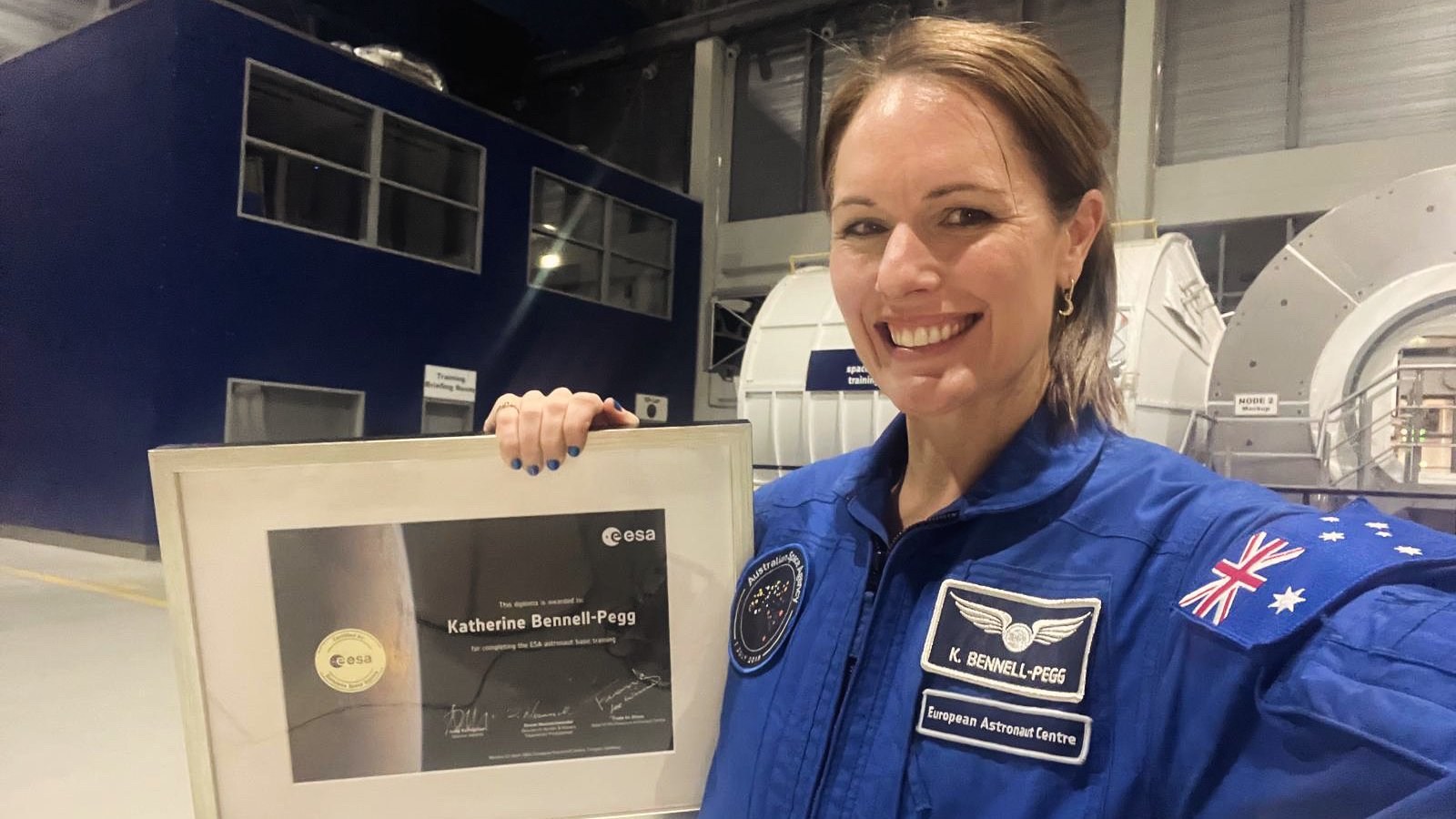ESA’s Astronaut Class Of 2022 Graduate Katherine Bennell-Pegg: Australia's First Female Astronaut - a former south curl curl girl
Former South Curl Curl resident and Queenwood school Class of 2002 alumna Katherine Bennell-Pegg is the first Australian woman trained as an astronaut by an international space agency, under the Australian flag. Katherine, Director of Space Technology at the Australian Space Agency, said it’s a journey she hopes will inspire more girls to take up a career in STEM. The Queenwood School motto is – Per Aspera ad Astra (through struggles to the stars)

Portrait of Australian Space Agency astronaut: Katherine Bennell-Pegg. CREDIT: ESA - P. Sebirot
When asked by a teacher at high school to write down three career options, Katherine only wrote ‘astronaut’.
With the encouragement of her parents, Katherine researched what she would need to do to fulfil this goal. She worked hard at school, studying maths, English, chemistry, physics, and economics in her final year. She also did a range of extra-curricular activities aimed at a career in space: aerobatic flying lessons, amateur astronomy, sport and debating.
In 2007, Katherine graduated with a Bachelor of Engineering (Honours) – Aeronautical Engineering (Space) and a Bachelor of Science (Advanced) – Physics from the University of Sydney. She kept busy during her studies, completing internships as a mechanical engineer, a physics researcher, and later, working as a computer programmer. She was also an Australian Army Reservist, a volunteer in the NSW SES and travelled to India with Engineers Without Borders.
‘The great thing about wanting to be an astronaut is that the backup careers are exciting. You can specialise in almost any STEM field: piloting, medicine, science and engineering are all good backgrounds for being an astronaut.’
Katherine worked across Europe on a range of space projects. This included human spaceflight missions and technologies, facilities for the International Space Station, debris removal concepts, Earth observation, and space exploration missions.
During this time, Katherine had two daughters with her husband Campbell, who also works in space. The family returned to Australia in 2019, with Katherine and Campbell both joining the Australian Space Agency.
Inspiring others to reach for the stars
During her 13-months of training, Katherine has stayed connected with Australia. She has inspired audiences with virtual presentations and done dozens of media interviews.
‘I want to use this experience to open doors for Australian scientists and engineers to utilise space for their discoveries, to inspire the pursuit of STEM careers, and show all Australians that they too can reach for the stars.’
Upon graduation, Katherine also became Australia’s first female astronaut.
‘I hope it paves the way for other young Australians who share my dream, particularly young girls. Only around one in ten astronauts are female, but the profile of an astronaut is evolving over time. The alpha-male stereotype is no longer what is being sought.’ Katherine said

Australian Space Agency astronaut candidate Katherine Bennell-Pegg during a radiation physics lesson as part of her basic astronaut training. CREDIT: ESA/DLR
During basic training, the astronaut candidates delved into radiation physics and had a unique encounter with two special colleagues—Helga and Zohar, two ‘phantoms’ equipped with radiation detectors sent on a lunar flyby during the Artemis I mission. The candidates examined the radiation sensors placed in Helga an Zohar as part of the MARE experiment, and were taught about radiation and space travel. This picture shows Katherine removing a radiation sensor from Helga’s neck area. The sensor is then placed in an evaluation device and measured.
Katherine commenced basic astronaut training alongside ESA’s newest class of astronauts, including Sophie Adenot, Rosemary Coogan, Pablo Álvarez Fernández, Raphaël Liégeois and Marco Sieber in April 2023. The new ESA astronaut class was selected in November 2022.
The one-year basic training provides an overall familiarisation and training in various areas, such as spacecraft systems, spacewalking, flight engineering, robotics and life support systems, as well as survival and medical training before they receive astronaut certification in April 2024.
After certification, they will move on to the next phases of pre-assignment and mission-specific training, paving the way for future missions to the International Space Station and beyond.
On 22 April 2024 the ESA celebrated the graduation of its class of 2022 astronaut candidates. The ceremony, held at the European Astronaut Centre in Cologne, Germany, signified the successful completion of basic training for the five European astronaut graduates and the Australian Space Agency’s first astronaut, all now eligible for spaceflight assignments.
The new graduates ESA astronauts are Sophie Adenot, Pablo Álvarez Fernández, Rosemary Coogan, Raphaël Liégeois and Marco Sieber. Also, as testament to ESA’s commitment in international collaboration, Katherine Bennell-Pegg from the Australian Space Agency graduated with her fellow ESA classmates.
“Today is a significant milestone as we celebrate the graduation of a new class of five ESA astronauts, who are now qualified to be assigned to future spaceflights. I am also proud to witness the graduation of an Australian astronaut candidate, which reaffirms our dedication to advancing international cooperation in space exploration. The addition of fresh talent and diverse perspectives and expertise enhances our ability to navigate the complexities of space exploration and solidifies ESA's role as a pioneering force in shaping our future in space,” said ESA Director General Josef Aschbacher.
Selected for training in 2022 at the ESA Ministerial Council, the astronaut candidates commenced their basic training in April 2023, first at ESA’s European Astronaut Centre and then across the globe. They completed a comprehensive one-year training programme covering essential skills such as spacecraft systems, spacewalking, flight engineering, robotics and life support systems, as well as survival and medical training.
After certification, assigned ESA astronauts from the new class will move on to the next phases of pre-assignment and mission-specific training, paving the way for future missions to the International Space Station and beyond.
ESA received an overwhelming response to its call for applications, with more than 22, 500 candidates from ESA Member States. From this pool, 17 individuals were chosen to form the astronaut class of 2022, including 12 members of the ESA astronaut reserve and five astronaut candidates who have completed their basic training.
ESA also established a reserve pool of astronauts for the first time in 2022. Comprised of candidates who excelled throughout the selection process, this reserve pool stands ready to be called upon for project astronaut roles as flight opportunities arise. The first among those was Marcus Wandt, who flew on the Axiom-3 mission in January this year.
ESA’s Director of Human and Robotic Exploration Daniel Neuenschwander said, “As the basic training is successfully completed by our new ESA astronauts, we embark on a new era in European astronaut history. These five new members of the European astronaut corps, alongside the members of the reserve, underscore our dedication to fostering talent and maximising opportunities for space exploration. We are poised to embark on a new era of collaborative endeavours, pushing the boundaries of discovery and shaping the future of space exploration.”
Additionally, one member of the reserve pool is participating in the “Fly! Feasibility Study”, which explores options for the inclusion of astronauts with physical disabilities in human spaceflight missions and future endeavours.
The class of 2022 astronaut graduates in their own words:
Australian Space Agency astronaut Katherine Bennell-Pegg
“When I dreamed of becoming an astronaut as a child, I never thought it possible to do so representing Australia. Now, we have the Australian Space Agency and a growing space sector which can really benefit from the knowledge and insights I have gained during training with ESA. I'm incredibly determined to make the most of this past year, and whatever follows, to generate further opportunities for Australian industry, and the aspirations of everyone back home. Partnering with ESA has been a remarkable opportunity to not only contribute to our shared goals but also to foster collaboration on a global scale, which is essential for the future of space exploration.”
ESA astronaut Sophie Adenot
“Becoming an astronaut has been a lifelong dream, and completing basic training is just the beginning of an extraordinary journey. With previous experiences that have shaped me, I've faced challenges that have prepared me for the rigors of space exploration. I'm honoured to bring my background and enthusiasm to a team dedicated to pushing the boundaries of human capability in space, the most challenging and hostile environment there is.”
ESA astronaut Pablo Álvarez Fernández
“Completing basic astronaut training has been an extraordinary journey of personal growth. I'm deeply grateful for the invaluable lessons learned from the best in the field and thrilled to play a role in shaping the future of space exploration. As an ESA astronaut representing Spain, I am honoured to join the lineage of pioneers like Pedro Duque. This opportunity fills me with immense pride, and I'm excited to elevate our shared passion for space to unprecedented heights.”
ESA astronaut Rosemary Coogan
“Graduating from astronaut basic training is an incredibly moving moment for me. From dreaming about space to now being one step closer to reaching it, I'm filled with gratitude and determination to make the most of this extraordinary opportunity. I’m proud to share this moment with my fellow astronaut graduates and of the commitment of our international team to exploration. Together, we stand ready to embrace the challenges and opportunities that lie ahead, united by our shared passion for space.”
ESA astronaut Raphaël Liégeois
“Completing basic astronaut training has been an intense experience, highlighting the importance of teamwork and continuous learning. I'm excited to apply these lessons as I embark on the next phase of my journey. I'm eager to contribute to the ongoing journey of discovery and scientific advancement, inspired by Belgium's steadfast dedication to the exploration of the new frontiers.”
ESA astronaut Marco Sieber
“As I stand on the threshold of a new chapter in my life, I am humbled by the challenges and triumphs of basic astronaut training. I'm ready to being part of the collective effort of exploring our universe for the benefit of life on Earth and for future generations, as well as contributing to Switzerland’s participation in the emergence, consolidation and expansion of European space cooperation.”

ESA's astronaut class of 2022 including Sophie Adenot, Rosemary Coogan, Pablo Álvarez Fernández, Raphaël Liégeois, Marco Sieber, and Australian Space Agency's Katherine Bennell-Pegg during their graduation ceremony at ESA’s European Astronaut Centre on 22 April 2024. Receiving certification marks their transition from candidates to fully qualified astronauts eligible for space missions. Selected in November 2022, the group began their training in April 2023. Basic astronaut training covers spacecraft systems, spacewalks, flight engineering, robotics, life support systems, survival, and medical training, followed by pre-assignment and mission-specific training, setting the stage for future missions to the International Space Station and beyond. CREDIT: ESA - P. Sebirot
ESA's astronaut candidates of the class of 2022 at the European Astronaut Centre in Cologne. The five candidates are Sophie Adenot, Pablo Álvarez Fernández, Rosemary Coogan, Raphaël Liégeois, and Marco Sieber. The group is part of the 17-member astronaut class of 2022, selected from 22 500 applicants from across ESA Member States.
The astronaut candidates are trained to the highest level for future space missions. Basic training includes learning about space exploration, technical and scientific disciplines, space systems and operations, as well as spacewalks and survival training. The astronaut candidates are joined by Australian Space Agency astronaut candidate Katherine Bennell-Pegg.

Katherine Bennell-Pegg with her Certificate - photo via Twitter/X where Katherine tweeted ''This is going straight to the pool room!''
Watch 'Into the Light'
Published March 14, 2024 by Australian Space Agency
Into the Light showcases the power of a dream and the determination and hard work that goes into making that dream a reality. Australian astronaut-in-training Katherine Bennell-Pegg takes the audience on a journey from a childhood realisation of how vast our universe is, to the knowledge gained when we explore the unknown.